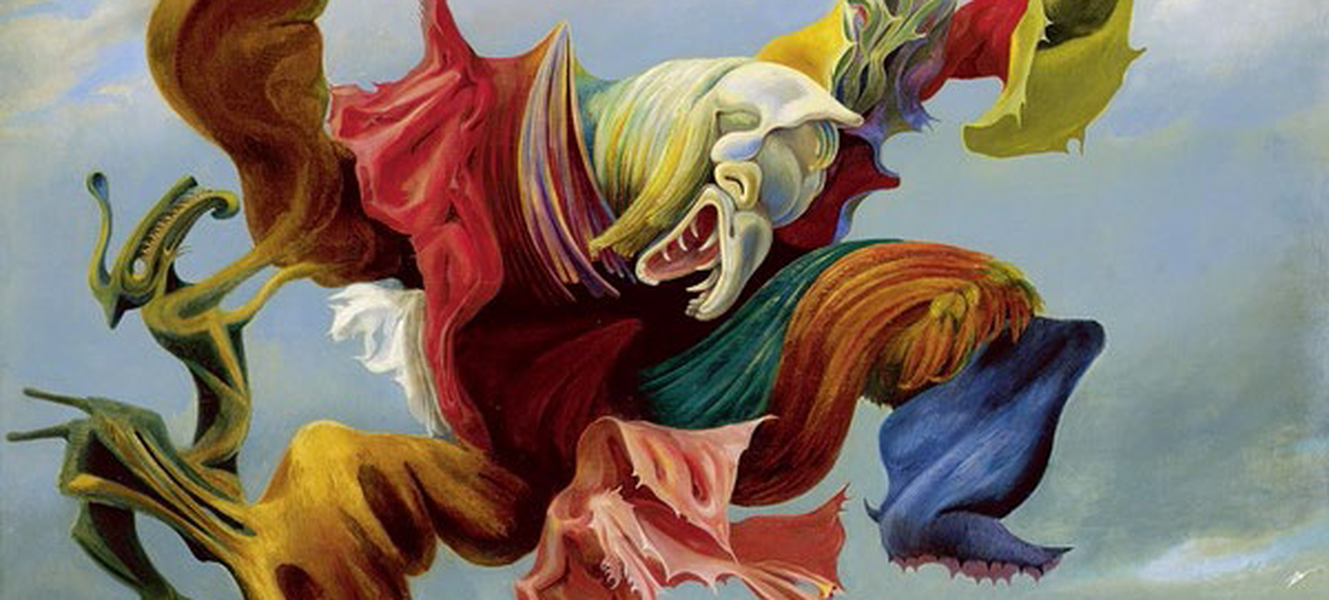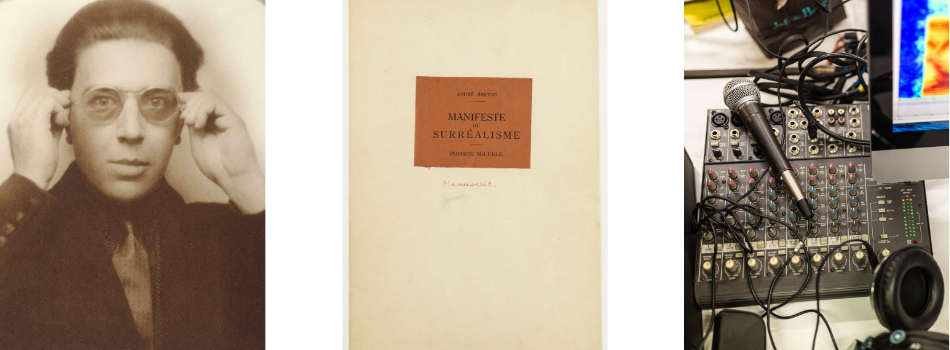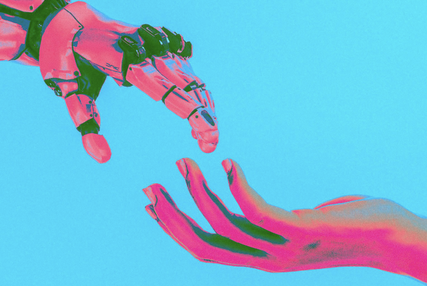Grâce aux progrès de l’IA, l’Ircam recrée la voix d’André Breton pour l’exposition « Surréalisme »
Une découverte du surréalisme au son de la voix d’André Breton
Dès l’entrée, la voix du poète retentit, guidant les visiteur.euse.s jusqu’au cœur de l’exposition, où repose son Manifeste du surréalisme, abrité par un « tambour » central. La découverte du manuscrit original d’André Breton, prêté à titre exceptionnel par la Bibliothèque nationale de France, est accompagnée par un court métrage immersif projeté à 300 degrés, qui en éclaire la genèse et le sens. Curiosité notable : bien que ce soit la voix d’André Breton lui-même qui présente ces écrits, celle-ci n’a en vérité jamais été enregistrée à l’époque de la publication du Manifeste. Il s’agit là d’une prouesse scientifique, réalisée par les équipes du laboratoire Sciences et Technologies de la Musique et du Son (STMS) de l’Ircam, qui sont parvenues à recréer la voix du jeune poète grâce à l’intelligence artificielle.
 Max Ernst, L’ange du foyer (Le triomphe du surréalisme), tableau à l'affiche de l'exposition Surréalisme au Centre Pompidou
Max Ernst, L’ange du foyer (Le triomphe du surréalisme), tableau à l'affiche de l'exposition Surréalisme au Centre Pompidou
© Adagp, Paris. Vincent Everarts Photographie
Associant peintures, dessins, films, photographies et documents littéraires, l’exposition présente 250 chefs d’œuvre d’artistes emblématiques du mouvement, issus de collections publiques et privées internationales. Parmi les artistes représentés, on retrouve Salvador Dalí, René Magritte, Giorgio de Chirico, Max Ernst, Joan Miró, sans oublier les surréalistes femmes, telles que Leonora Carrington, Ithell Colquhoun, Dora Maar.
À la fois chronologique et thématique, le parcours introduit par la voix de Breton est rythmé par 14 chapitres évoquant les figures littéraires ayant inspiré le mouvement (Lautréamont, Lewis Carroll, Sade...) et les principes poétiques qui structurent son imaginaire (l'artiste-médium, le rêve, la pierre philosophale, la forêt...).
Un nouveau défi de conversion vocale pour les équipes de l’Ircam
Les chercheur.euse.s et ingénieur.e.s de l’Ircam réalisent ici l’exploit de faire revivre une voix disparue, avec le défi supplémentaire de la rajeunir. Pour cela, l’équipe Analyse et synthèse des sons a eu recours aux nouvelles technologies de pointe développées pour la conversion vocale, elles-mêmes basées sur les dernières avancées des recherches fondamentales en intelligence artificielle.

De gauche à droite : « PHOTOMATON » Portrait d'André Breton © Centre Pompidou
Le Manifeste du surréalisme © BnF, département des Manuscrits
Équipe Analyse Synthèse et Son © Philippe Barbosa
Le processus de reconstitution qui a été mis au point est fondé sur des technologies d’apprentissage profond (deep learning) combinant des stratégies d’analyse de contenu et de différenciation qui permettent de démêler le contenu et l’expressivité du discours de l’acteur interprétant André Breton, de son identité vocale.
L’objectif étant de transformer la voix d’un acteur vivant en voix historique, l’équipe de recherche s’est donc distancée des outils appelés « text-to-speech », qui permettent aujourd’hui de générer à partir d’un texte une voix synthétique intelligible et expressive, mais qui manque de contextualisation, pour se tourner vers un modèle de conversion de la voix du locuteur. En partant de l’interprétation de l’acteur, ce modèle en change l'identité vocale tout en conservant son naturel et son expressivité et le contenu du discours, pour la remplacer par celle de Breton. Une fois ce masque vocal créé, quelques derniers ajustements sonores sont appliqués en post-production. La voix est alors prête, plus vraie que nature.
L’exposition « Surréalisme » propose ainsi un parcours unique, sublimé par le récit de l’auteur de l’un des textes fondateurs de ce mouvement intellectuel, littéraire et artistique qui a révolutionné les pensées, au lendemain de la Première Guerre mondiale.
Découvrir le projet Visiter l'exposition
Commissariat
Didier Ottinger directeur adjoint du Musée national d’art moderne
Marie Sarré attachée de conservation au service des collections modernes, Centre Pompidou
Reconstruction de la voix d’André Breton avec des techniques d’intelligence artificielle
Équipe Ircam
Axel Roebel directeur de recherche Ircam-STMS
Mathilde Abrassart doctorante Ircam-STMS
Sylvain Cadars ingénieur du son
Avec la voix de Hugues Jourdain



